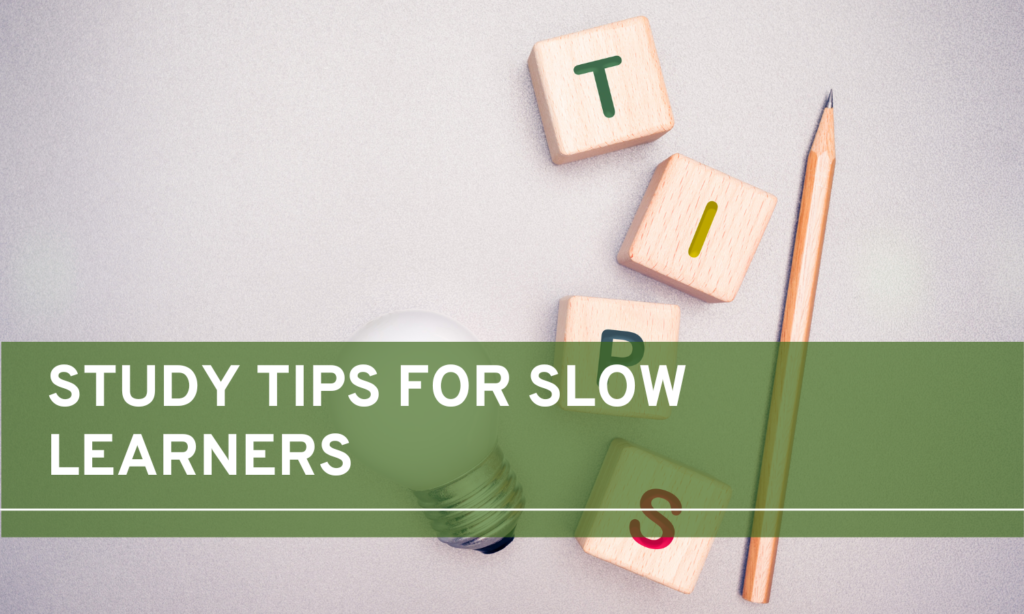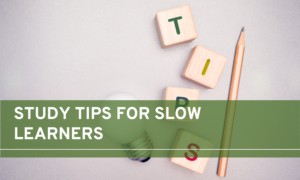If you are a slow learner, you’re probably frustrated by the difficulty of absorbing new information. Thankfully, there are study tips for slow learners that can make the learning process a lot easier.
These techniques include Mind maps, Analysing the topic in your own words, Remediation classes, and Individualized education plans.
Table of Contents
Mind Maps
Mind maps can be useful tools for studying. They help visualize complicated ideas and concepts and help you come up with a plan to solve them.
They can also help you solve business problems, such as reverse engineering sales goals. They can help you figure out your career path, and they can even help you break down personal projects.
Mind maps also help students keep track of lectures, reading materials, and assignments. They can help you organize topics and classes, and even mark which lessons have been completed.
Mind maps are an effective way to learn new material and revise it at exam time. They can help students who have difficulty memorizing long lists of information.

A mind map can save a lot of time and help them retain key information more easily.
Mind maps can help you study faster by visualizing the concepts you’re learning. They help you visualize connections and relationships between ideas.
You can also use them to create notes and outline course content. Mind maps don’t have to be large. You can make one as small as a note and expand it later.
Mind maps can also help you brainstorm new ideas. Mind maps can help you gather arguments and references. This is especially useful when you don’t have a lot of time to memorize the material.
Mind mapping allows you to use your creative side to brainstorm ideas. It also helps you recall concepts more easily and efficiently.
When creating a mind map, you need to use primary and secondary associations. A primary association is the branch that reaches out from a central image.
Secondary associations are those that branch out from the first branch. You should keep the number of primary associations to seven. The number of connections is important because the brain works by association, which means it loves to connect things together.
It is best to use curving lines and different colors for the different branches, which will make the connections easier to remember.
Analyse the topic in your own words
One way to make the Slow Learner story more compelling is to make it satirical. Movies like Forrest Gump and The Lottery take advantage of the slow learner to satirically depict the disconnect between intellectualism and connected practical life.
Such movies often critique the estrangement of large institutions from common good and decency, and elaborate social ritual from a sense of good manners. These movies also wrap the slow learner within a romanticized belief system.
Remediation Classes
Remediation classes are an excellent option for students who are struggling with their academic performance. They are specially designed to address the specific needs of slow learners and offer a comfortable learning environment.
They enable teachers to identify the areas in which students are weak and to help them improve their performance. Unlike traditional classes, these classes do not try to cram in too much information or make lectures difficult to follow.
Rather, teachers employ a variety of teaching methods and strategies to help slow learners improve. Ultimately, this will lead to increased intrinsic motivation for students.
Remediation classes are not typically semester-long classes. Some institutions may offer a crash course that brings students up to speed in a short amount of time.
Others may offer standard classes over the course of a semester, with homework and tests. These classes often focus on review, rather than learning the material in depth.
Slow learners need extra help from teachers and parents. They need extra attention and encouragement in order to succeed. They often develop a negative attitude and have trouble keeping up with other students.
Parents should be patient and supportive. Teachers should also keep oral assignments appropriate to their level of competency, so that slow learners can stay motivated.
Remediation classes are an effective way to help students improve their skills. The curriculum and instruction differ depending on what the student struggles with.
Remediation teachers use creative strategies and multisensory learning strategies to help students overcome their weaknesses. They also work on developing the fundamentals of different learning skills, identifying weak points and developing study skills.
Are the Study Tips for Right-Brained Students Also Helpful for Slow Learners?
Many study tips for right-brained students, such as using visual aids and hands-on learning, can also be beneficial for slow learners. These strategies can help make information more engaging and easier to understand, allowing slow learners to grasp concepts more effectively.
Individualized Education Plan
A well-designed Individualized education plan for slow learners can significantly improve the academic functioning of students with learning disabilities. These students often do not receive the attention or support they need in traditional classrooms.
However, individualized education can help these students achieve greater academic success than their mainstream counterparts. Here are some of the key benefits of this special learning procedure for slow learners:
Identify the areas in the curriculum that need extra attention or assistance. Identifying the major areas of weakness or special needs is the first step in creating an Individualized Education Plan.
The plan should include specific, individualized services that address the student’s strengths and weaknesses. For example, if the student is a visual learner, the plan should include visual aids to aid in comprehension.
In addition, the plan should contain additional resources, such as manipulatives and small groups, which can help the student develop their skills in these areas.
Once the strengths and weaknesses of the student are identified, annual goals can be set. These goals are used to ensure that the student is on track to meet his or her learning goals.
Once the goals are set, teachers can identify the specific methods that will help the student achieve the goals. Once the plan has been developed, it should be implemented at the earliest opportunity.
An IEP for slow learners must be written by a team consisting of several people. Each person should bring relevant information to the team and work together to create the plan.
Each member of the team will contribute to the written plan by adding to their knowledge of the child and how to help him or her succeed in his or her schooling. The team must meet within 30 days of the child’s eligibility for an IEP.
Encourage Peer Tutoring
Identifying a SL in the classroom can be a difficult task. Fortunately, peer tutors do exist, and they are very valuable resources. They can improve academic achievement, improve self-confidence, and improve a student’s attitude towards the subject matter.
Moreover, they can increase a student’s persistence in completing tasks. However, there are a few important things to consider before beginning the peer tutoring process.
First, teachers should provide explicit instruction for the peer tutoring process. Students should learn how to give feedback to their partners, as well as how to monitor each other’s progress.
Peer tutoring can be an effective strategy to bring all students up to speed. It also gives teachers a chance to get feedback from students, revealing any areas where they might need to clarify things.
Moreover, peer tutoring for slow learners can also encourage students to ask for help whenever they need it.
Peer tutoring can also improve a student’s attitudes towards mathematics. Slow learners are unable to learn as quickly as their peers do, and they tend to live in the moment.
Peer tutoring helps them develop their social behavior. Once they have the skills to tutor their peers, they can begin to feel more comfortable with math.
They will also feel more confident in their abilities and be less intimidated when teaching others.
One study evaluated the impact of peer tutoring on fourth-year slow learners in mathematics. Researchers found that students who participated in peer tutoring still made improvements on basic skills tests two years after the peer tutoring ended.
